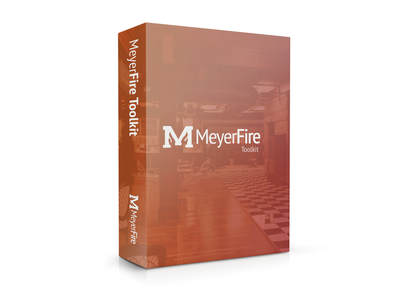|
We have a case where two (2) x 2,000 gpm existing electric fire pumps (primary duty pumps) are available.
Now, the system design demand is increasing from 4,000 gpm to 12,000 gpm due to a scope change, so we are bringing in new electric fire pumps (as primary/duty) to meet the higher demand. All new fire pumps could be either four (4) x 2,000 gpm or two (2) x 4,000 gpm towards meeting the 12,000 gpm system capacity. All performance test curves are checked for all existing fire pumps; they are almost new and meeting the required residual pressure at 2,000 gpm and their performance is close to matching the original equipment manufacturer curves; so these existing pumps need to be retained. Now we do have space constraints, so we'd like to use the two (2) x 4,000 gpm pumps, and their pressure characteristics would be the same as the existing pumps. Would NFPA 13/20 (and any other relevant NFPA standard here) permit two different pump capacities for the system? Would having different pump capacities be concerning, or cause issues? Is there anything else we should be considering here regarding the capacities? Thanks in advance. Sent in anonymously for discussion. Click Title to View | Submit Your Question | Subscribe
12 Comments
Pete H
2/6/2024 06:47:14 am
From NFPA 20 (2016 Edition):
Reply
Dan Wilder
2/6/2024 07:21:17 am
Wouldn't this setup be in parallel to achieve the 12K GPM system demand?
Reply
Pete H
2/6/2024 07:36:26 am
An excellent point!
Sunil Kumar
2/6/2024 08:09:06 pm
Yes, they all need to be setup in parallel to achieve 12K demand. Also, little bit more details as Client also requires following shall be meeting.
Glenn Berger
2/6/2024 08:29:16 am
With the revised flows, I be concerned about retaining any portion of the existing configuration.
Reply
Sunil Kumar
2/6/2024 08:33:10 pm
For Oil & Gas facilities (either Onshore/Offshore), The fire water demand varies based on individual units/platforms and their respective locations (they always physically segregated to avoid fire escalation between units), some platform/unit have much lower demand (e.g. 2000 gpm) and some are higher (e.g. 12K or even more).
Reply
Dan Wilder
2/6/2024 09:03:56 am
All these pump questions, had to go back to some hanger drawings with multiple pumps....
Reply
Franck
2/6/2024 10:57:12 am
Discharge piping sizing not only for the test header but for the entire installation downstream.
Reply
Sunil Kumar
2/7/2024 07:18:46 am
Each pump(s) suction & discharge are sized based on table 4.28 along with mains taking 150% cumulative demand and rest all relief, test headers are sized accordingly. All pumps are set to start on pressure differences in case fire. In normal (no fire condition), 2 Jockey (1 operating and 1 standby) are maintaining pressures. Rest all meeting all NFPAs design requirements.
Reply
Jack G
2/6/2024 10:31:40 am
Agree with Dan. My refueling aircraft handler had a 30 inch pipe with 5-individual 12 inch connections, pumps in parallel, passed at 15 psi increments which was tough to set up.
Reply
Franck
2/6/2024 11:04:26 am
I would also suggest (not from the code, but from a reliability standpoint) when there is a need for more than one pump to have 3x50% rather than 3x33%.
Reply
Sunil Kumar
2/7/2024 07:28:56 am
To ensure the availability and reliability of the firewater system, we have 100% backup (diesel driven) pumps equivalent to 12K demand.
Reply
Leave a Reply. |
ALL-ACCESSSUBSCRIBESubscribe and learn something new each day:
COMMUNITYTop June '24 Contributors
YOUR POSTPE EXAMGet 100 Days of Free Sample Questions right to you!
FILTERS
All
ARCHIVES
July 2024
PE PREP SERIES |
MeyerFire
- Blog
- Forum
-
THE TOOLKIT
- SUBMIT AN IDEA
- BACKFLOW DATABASE*
- CLEAN AGENT ESTIMATOR*
- CLOUD CEILING CALCULATOR
- DOMESTIC DEMAND*
- FIRE FLOW CALCULATOR*
- FIRE PUMP ANALYZER*
- FIRE PUMP DATABASE*
- FRICTION LOSS CALCULATOR
- HANGER SPACER*
- IBC TRANSLATOR*
- K-FACTOR SELECTOR*
- NFPA 13 EDITION TRANSLATOR ('19 ONLY)
- NFPA 13 EDITION TRANSLATOR ('99-'22)*
- LIQUIDS ANALYZER*
- OBSTRUCTION CALCULATOR
- OBSTRUCTIONS AGAINST WALL*
- PITOT CONVERTER
- PLUMBING FIXTURE COUNTS
- QUICK RESPONSE AREA REDUCTION
- REMOTE AREA ANALYZER*
- SPRINKLER DATABASE*
- SPRINKLER FLOW*
- SYSTEM ESTIMATOR*
- TEST & DRAIN CALCULATOR
- THRUST BLOCK CALCULATOR
- TRAPEZE CALCULATOR
- UNIT CONVERTER
- VOLUME & COMPRESSOR CALCULATOR
- WATER STORAGE*
- WATER SUPPLY (US)
- WATER SUPPLY (METRIC)
- UNIVERSITY
- PE Exam
- LOGIN
- PRICING
- OUR CAUSE

MeyerFire.com is a startup community built to help fire protection professionals shine.
Our goal is to improve fire protection practices worldwide. We promote the industry by creating helpful tools and resources, and by bringing together industry professionals to share their expertise.
MeyerFire, LLC is a NICET Recognized Training Provider and International Code Council Preferred Education Provider.
All text, images, and media Copyright © 2016-2024 MeyerFire, LLC
We respect your privacy and personal data. See our Privacy Policy and Terms of Service. The views, opinions, and information found on this site represent solely the author and do not represent the opinions of any other party, nor does the presented material assume responsibility for its use. Fire protection and life safety systems constitute a critical component for public health and safety and you should consult with a licensed professional for proper design and code adherence.
Discussions are solely for the purpose of peer review and the exchange of ideas. All comments are reviewed. Comments which do not contribute, are not relevant, are spam, or are disrespectful in nature may be removed. Information presented and opinions expressed should not be relied upon as a replacement for consulting services. Some (not all) outbound links on this website, such as Amazon links, are affiliate-based where we receive a small commission for orders placed elsewhere.













 RSS Feed
RSS Feed
